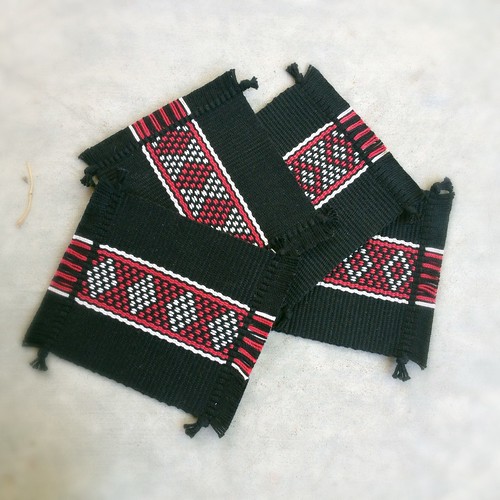 |
| a set of mini rugs using the al'ouerjan warping method. |
This project was kind of amazing for me. For the first time I felt completely settled into the backstrap weaving process. But before I get onto that I have to back track a bit. And at the end of this post I will provide the links for tutorials that are available on the web.
I started with samples of warp substitution and al'ouerjan warping to practice using my trusty size 3 cotton. The samples went along fine, and I was able to practice supplementary weft using thread to secure the warp floats on the back.
 |
| warp substitution and al'ouerjan samples |
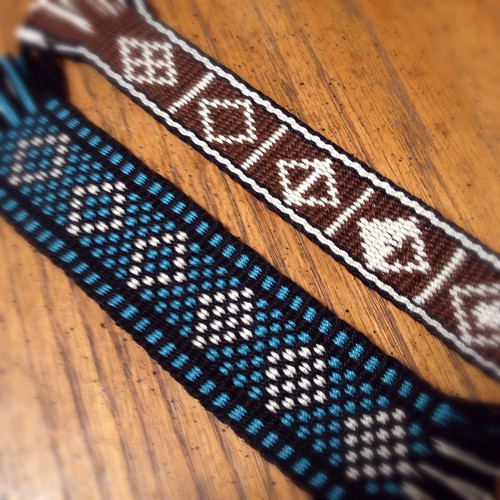 |
| al'ouerjan and warp substitution samples. |
Then I spent ALOT of time charting for a wider piece using these techniques. Although this piece looks better off loom than on, I felt it was plagued with problems, that eventually made me not want to weave on it anymore. Looking at it now, it's not that bad, and the piece is large enough to practice other techniques for making bags, so I will save it for that.
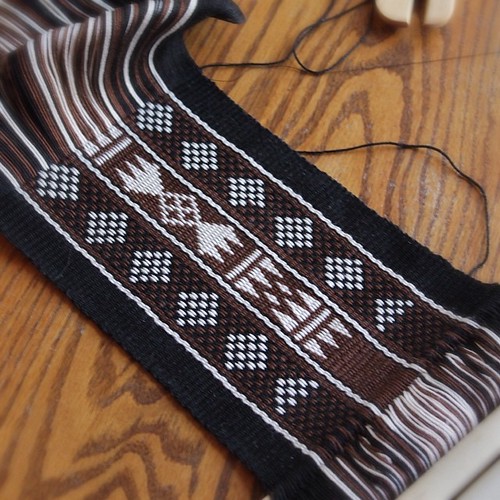 |
| the original piece that I wanted to weave turned into a sampler. |
So, the problems. The first thing I ran into was the chart I made did not match then shed set-up on the loom. I really learned a lot in regards to charting for a project, and it's harder than it looks. But the end result is that now, using 4-stake warping board, I can actually identify which stake belongs to which shed. I know this may sound like Greek, but if you happen to go this route, you'll know what I mean.
This was also the first time I dealt with 1/2 revolution warps, and it was a lot to get my mind around (wondering what a revolution is? Check it out here).
I spent more time re-drawing my chart, modified this time without all the detail I had the first time around. I wish I took a picture of it before I threw it out!
 |
| back of woven piece using supplemental weft thread. |
Finally, I got to sit down and weave, the first few inches went fine, but I was really having a hard time with one of the selvedge edges. I inserted a second coil rod, and it helped, but eventually, my warp tension was all over the place. The weaving just didn't feel right, and I spent more time making adjustments than weaving.
At this point I had woven about a foot and I wasn't liking it. So sampler it became, and I went on to practice weft twining.
I thought at first it was because it had been the widest piece I'd woven, and that was part of it, but ultimately, it all boiled down to sloppy warping on my part.
Taking a deep breath, I decided to make more mini rugs. Here were my goals for this project:
1. Use al'ouerjan warping technique in traditional colors.
2. Make 4 mini rugs using 4 different combinations in the al'ouerjan warp.
3. Pay close attention to my warp tension as I wind the warp on the warping board.
4. Weave evenly with neat selvedges.
5. Use 1 color basic weft twining to edge each rug.
6. Use a coil rod.
7. Use a supplementary weft thread to secure the long warp floats.
Whew! That seems like a lot, but here was the magic in it for me: everything fell into place. When I sat down to weave I did a few rows to establish width, and some weft twining to see how many warp bundles I wanted to twine (glad I did it, for the number of warps I wanted to bundle changed fron the last project I did using the same size yarn).
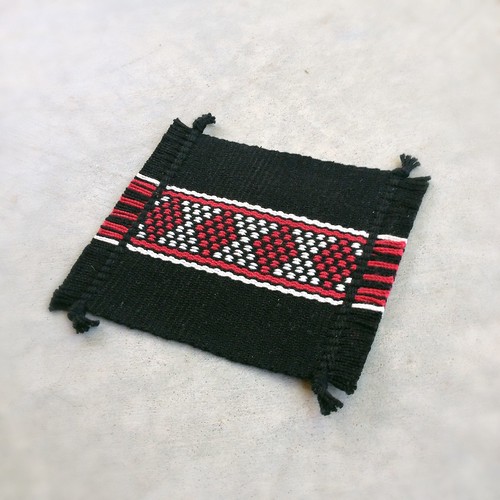 |
| rug # 1 red diamonds |
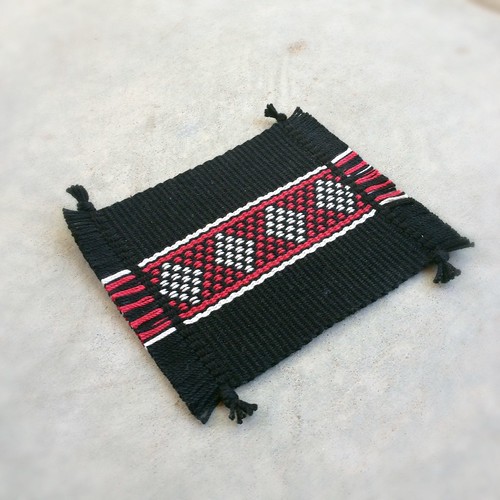 |
| rug # 2 white diamonds |
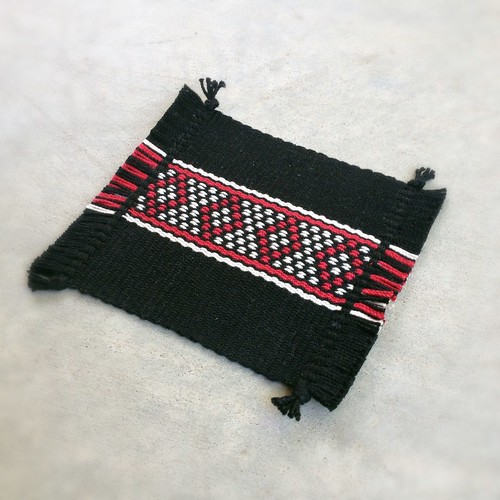 |
| rug # 3 |
My edges became so very consistent that I was amazed, I hardly had to use my ruler to measure. I don't assume that this will happen often, but it sure was nice this time. And using the supplementary weft thread to secure the long warp floats on the back of the fabric really neatened everything up.
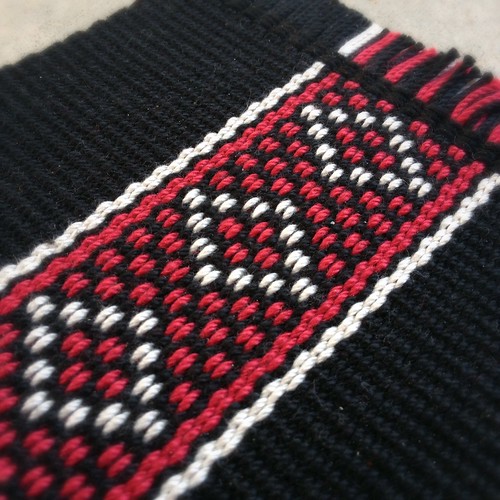 |
| rug # 4, close up of warp |
So I played around with different arrangements and the two photos above is my favorite. I noted this (what row to start the patterning on for it to look balanced) in my journal for the time I make these rugs again for gifts.
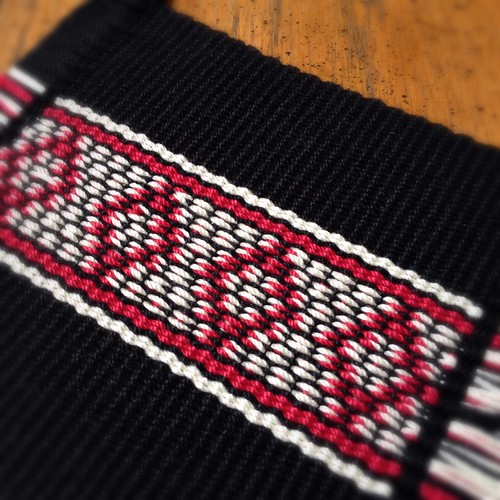 |
| close up of back of rug using supplemental weft thread |
Overall this was one of the most relaxing projects I've done so far. I will go back one day and re-try my original draft when the mood strikes me. I haven't tried the warp substitution, other than to practice the patterns in another technique called one-weft double weave.
If you are interested in learning these techniques, they are available at Laverne Waddington's Backstrap Weaving Blog: Warp Substitution, Al'ouerjan Warp, Supplementary Weft Thread, Using a Coil Rod, and Basic Weft Twining.
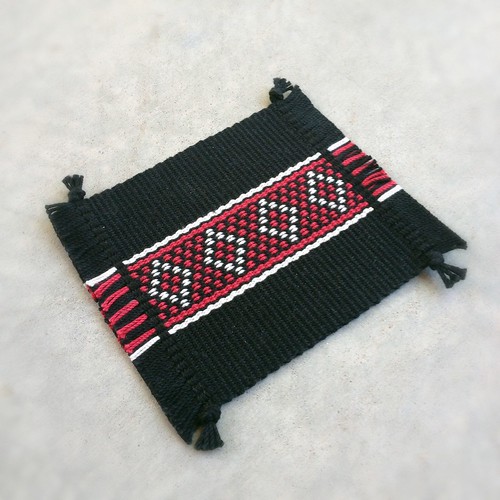
No comments:
Post a Comment